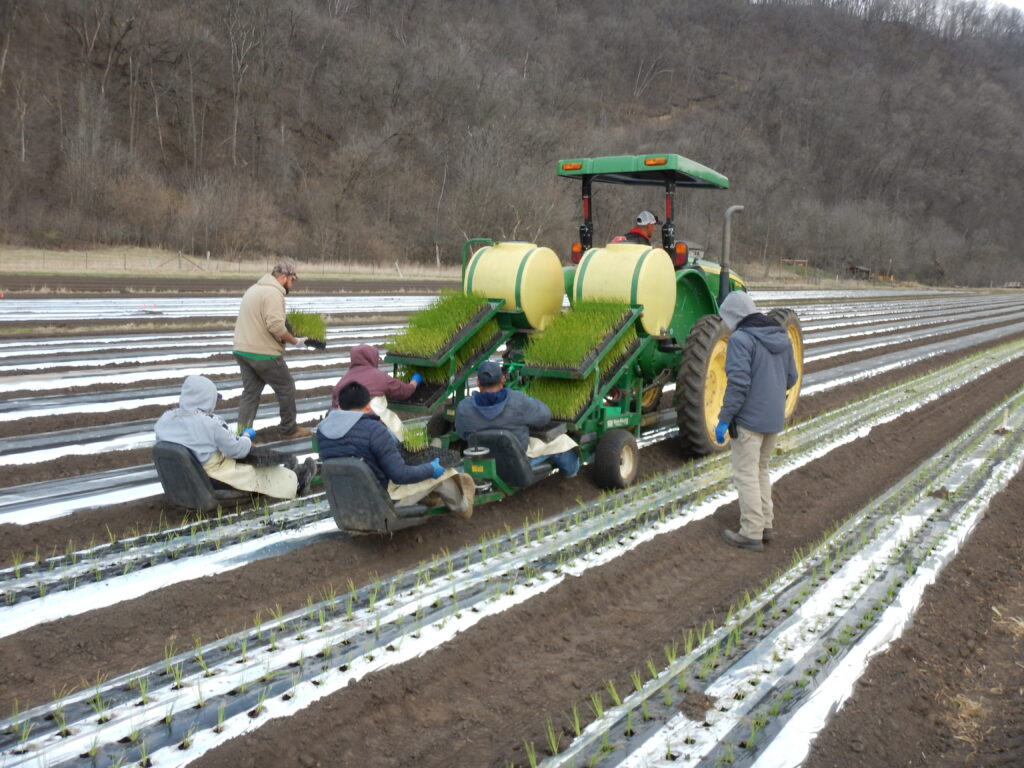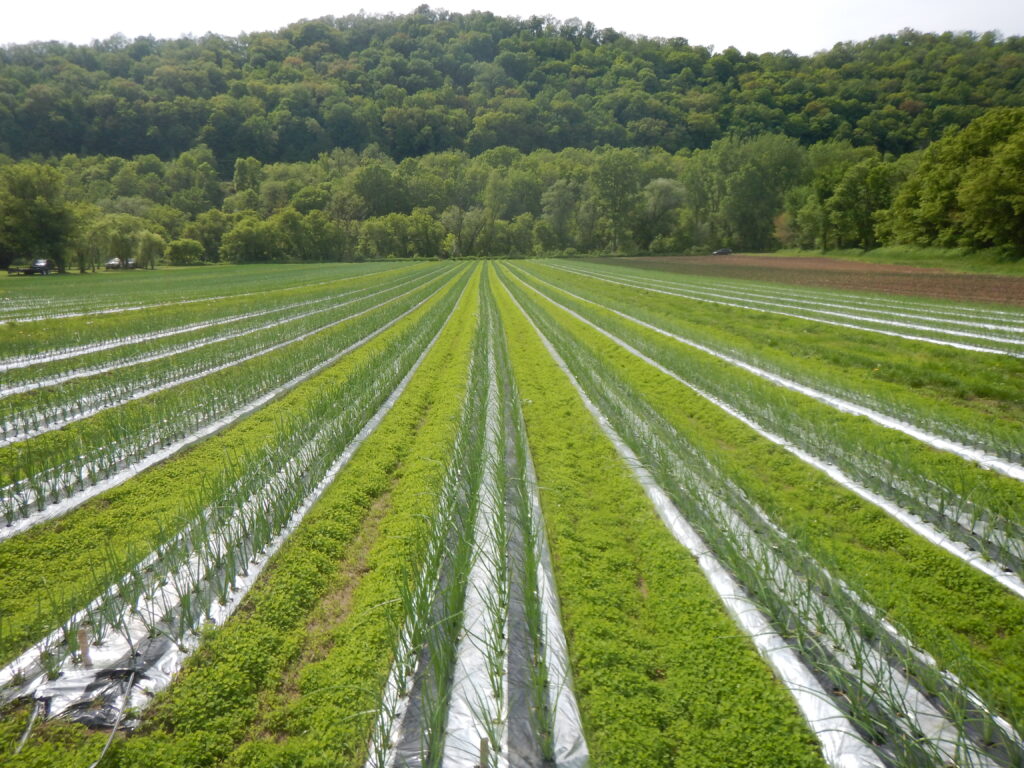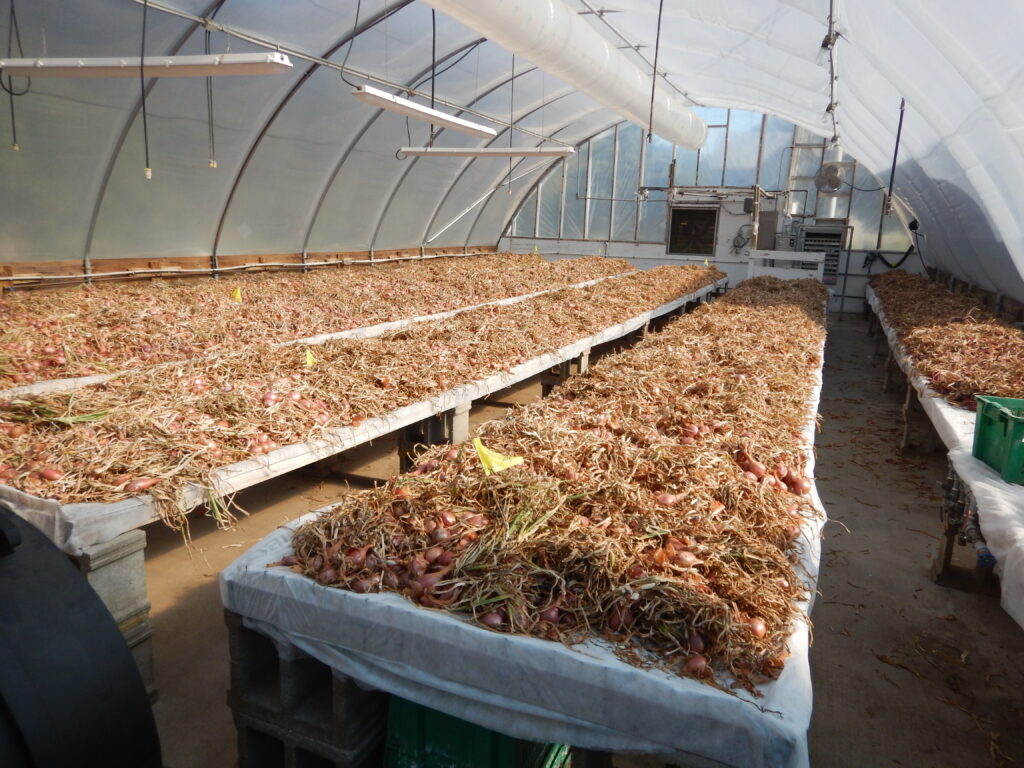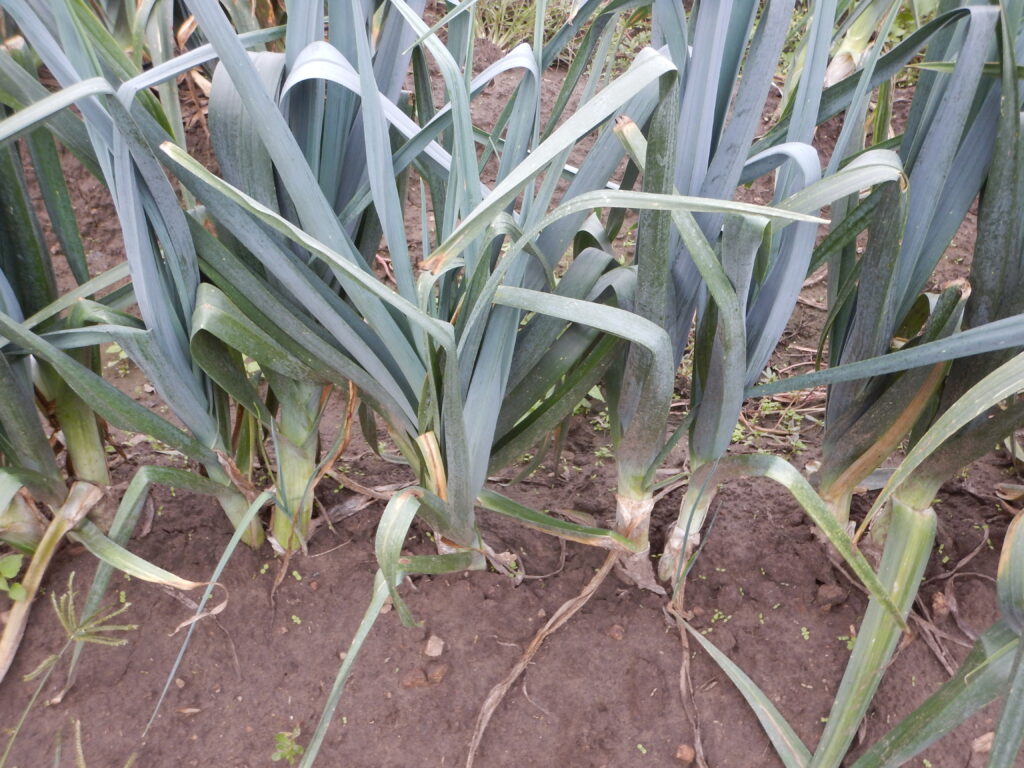What’s In The Box with Recipe Suggestions
Arugula: While arugula can be a pungent, spicy green, its flavor is more balanced in spring and fall. It pairs well in salads with fall fruit such as apples, pears and citrus. It’s also a good companion to peppers and tomatoes in sandwiches and salads.
Arugula Salad with Pears and Goat Cheese
Carrots: Use them to add a base of flavor to late season tomato sauce!
Creamy Parmesan Chicken and Rice Soup
Cauliflower and/or Broccoli: Roasting cauliflower is a great way to enhance the innate flavor of vegetables.If you are swimming in vegetables right now, consider blanching the broccoli and freezing it. You could also use it to make a raw broccoli salad, and don’t forget to use the stem as well as the florets!
Mediterranean Cauliflower Rice
Edamame: Use these sweet fresh soybeans in summer salads, stir-fry or fried rice. Don’t forget that the pod is not edible and it’s easiest to extract the bean if you cook the edamame in its pod first.
5 Flavorful Ways to Snack on Edamame
Italian Garlic: Include a little garlic in your meals every day and you’ll reap the health benefits of doing so. Garlic has a lot of important health benefits including being antimicrobial and contributing to heart health in a variety of ways.
Crushed Potatoes with Cream & Garlic
Jalapeño Pepper: There is one large jalapeño pepper in your box this week. Handle it with care as it is a hot pepper!
One-Pan Spicy Mexican Rice Skillet
Pineapple Jalapeño Pitcher Margaritas
Sugar Cube or Sweet Sarah or Canary Melons: Your box will contain one of these melon varieties. Our expert picking crew reads the signs of the plant and only picks melons that are ripe. However, melons will continue to ripen after they are picked. It’s best to store them at room temperature if you want to ripen your melon a little more. As it continues to ripen it may change color slightly, become a bit soft at the stem end, and become very aromatic!
Red & Yellow Onions: Tis the season for Bacon, Lettuce and Tomato Sandwiches, except we don’t have any lettuce! We make tasty bacon and tomato sandwiches without the lettuce, sub thinly sliced onions and peppers! Richard highly recommends arugula on your BLT!
Red and/or Orange Italian Frying Peppers: Both of these varieties are long slender peppers that taper to a point and they are sweet! Eat them raw, sauté them, roast them in the oven, or roast them over an open flame for more of a smoky flavor.
Sweet Pepper & Cheddar Clafoutis
Red Pepper, Lentil & Tomato Salad
Carola or Peter Wilcox Potatoes: Carola is one of our longstanding potato varieties that is gold on the outside and inside! It’s very similar to what you may call a “Yukon Gold” potato. It’s classified as a waxy potato and is good for baking, frying, boiling and roasting. Peter Wilcox Potatoes have dark purple skin and gold flesh; this variety is a great example of how nutrients in food benefit our health but also make food taste better!
Crispy Garlic Roasted Potatoes
Sweet Corn: This is the time in the season when the corn earworm can be a problem. We have caught a few moths in our pheromone trap, which is an indicator this pest is present and may result in a corn earworm on the tip of the corn. We’ve been monitoring closely and have used an organically approved spray application to prevent the worms from being a problem. It is possible you may find a worm in one of your ears. If you do, just trim the tip of the ear off and put it in the compost. The remaining 90% of the ear is likely unaffected and delicious!
Sun Orange, Chocolate Sprinkles, or Red Grape Tomatoes: Cut in half and add them to a simple pasta salad with other summer vegetables or sauté them along with onions and green beans for a quick side dish.
Poached Eggs and Tomatoes on Toast
Variety of Tomatoes: You may receive tomatoes at different stages of ripeness. We recommend you remove them from the bag and ripen them at room temperature. Assess which ones may be ready to eat now versus those that need a few more days.
Spice Braised Lentils & Tomatoes with Toasted Coconut
Shakshuka (Poached Eggs in Tomato-Pepper Sauce)
Red Seedless Watermelon: Store in the refrigerator until you are ready to eat it, then cut and enjoy! If you have a dehydrator, try dehydrating the watermelon, Kelly and her family approve!
Vegetable Feature: Onions

Onions are an important crop on our farm. They aren’t one of our big dollar crops, in fact they are probably one of the most labor-intensive crops to handle with a higher overall cost production. However, we firmly believe that daily consumption of plants in the onion/garlic family is one key to good health, and they are a staple ingredient that we, and many other families, include in our daily meals. Thus, we plan to include an onion and/or garlic selection of some sort in every CSA box over the course of our thirty-week season.
With the above goals in mind, we start the season with ramps, wild-harvested from our woods. Ramps are followed or accompanied by several perennial selections including chives and our overwintered Egyptian walking onions and potato onions. These selections give us a jump start on the season while we are hustling to grow onions from seeds to cover the remainder of the year and get us through the winter until the next spring when we start again with the perennial crops. The beauty of onions is that they are “in season” every season of the year!
Whether red, white or yellow onions, there are a wide variety of choices to select from, and we consider the genetics of a seed to be very important. We look for varieties that have disease resistant tops that will survive long enough to produce a full-sized onion. The sweet Spanish onions you received earlier this season are an early season variety that is very mild when eaten raw and super sweet when cooked because of their higher levels of sugars. They have thinner outer skins and will store for just 3-6 months at most. In contrast, there are different varieties grown to produce an onion that has the ability to hold in long-term storage for 9-12 months. These varieties are usually “tear jerkers” and are much stronger and more pungent. They still have natural sugars that come out when cooked, but the chemical makeup of the onion and lower sugar concentrations are what help keep the onion in good quality during long storage. We don’t need to store onions for 9-12 months, so in recent years we have opted to grow more shorter season sweet onions that grow faster and are milder. We believe there are health benefits from eating raw or just lightly cooked onions and garlic, so for several different reasons we consider onions in this class to be a good fit for us.

Onions are a challenge to grow in that they grow slow, and their tops are poor competitors against weeds. Also, they are vulnerable to the tiny onion thrip, a natural pest enemy which sucks on onion tops deep in the center and leaves holes for disease spores to enter the onion as they kill the top and hence stop the onion development. Commercial, conventional onions are all treated with systemic insecticide, a neonicotinoid which has its own severe problems.
Onions respond well to regular watering but can quickly suffer from too much water. Twenty-five years ago, when we grew onions on bare ground, we would harvest good looking onions to dry in the greenhouse, only to find later that many had “soft rot” in the center or a soft layer somewhere in the rings. Our investigations led us to understand that the bad layer was the result of an earlier wet weather event in the field. The neck rot was due to damage caused by the thrips that created an entry point into the onion for the bacteria that causes soft rot.
So, we decided we needed a new strategy. We transitioned to a system of transplanting 4 rows of onions on a raised bed, covered with plastic mulch that has a shiny, reflective surface that almost totally keeps thrips away by disorienting them! The raised bed drains off excess water quickly, but the buried drip tape under the bed allows us to water and feed onions at their roots.
The size of an onion is determined by how thick or thin we seed them in the greenhouse. Single onions can easily reach 1 pound each! Too big for most meals, leaving you with a partially used onion in the refrigerator to be forgotten. We think it is better to have more modestly sized onions that can be used in one meal yet not so small that you have to peel several at a time. We pay close attention to the quality of the seed and try to adjust our seeding rate accordingly to get the size onions we’re looking for. Richard and Mellissa spent some time evaluating all of the onions drying in the greenhouses. Making notes on each variety for next year.

Once the onion transplants are big enough, we transplant them into their plastic mulch covered beds. They go to the field as early in April as the weather allows and it takes us most of 3 days with a crew of 7 to transplant. Over the course of their season, they receive more water and fertilizer than most other crops. The entire system is an expensive production system with the mid February greenhouse planting, the reflective mulch to deter the thrips, hand harvest, and then the many hours of topping and cleaning them by hand. We have a mechanical onion topper, but we have chosen to hand top and clean because it produces a more “pristine” onion without mechanical topping damage. This is all very labor intensive, and we know we cannot compete with the price of onions grown in the dry western states with more mechanized systems. We only grow onions for our CSA members and local customers, with only a small percentage of shallots and cipollini onions for our retail partners. We hope you appreciate the extra effort we put forth to make this all come together and I encourage you to please eat onions daily for flavor and health!
Short & Sweet Weekly Farm Update
Fall is definitely in the air this week. This week is the last week for sweet corn, and edamame, all done for the season.

Looking ahead to next week’s share box, we will see a mix of peppers and tomatoes, but more brassicas with cauliflower, cabbage, and broccoli returning from our fall plantings. We may even see leeks in boxes. Spinach and Salad Mix look good and could also make next weeks share box. And a sure sign of Autumn is that next week we will start to harvest our winter squash! It is always crazy how fast the seasons go by!



